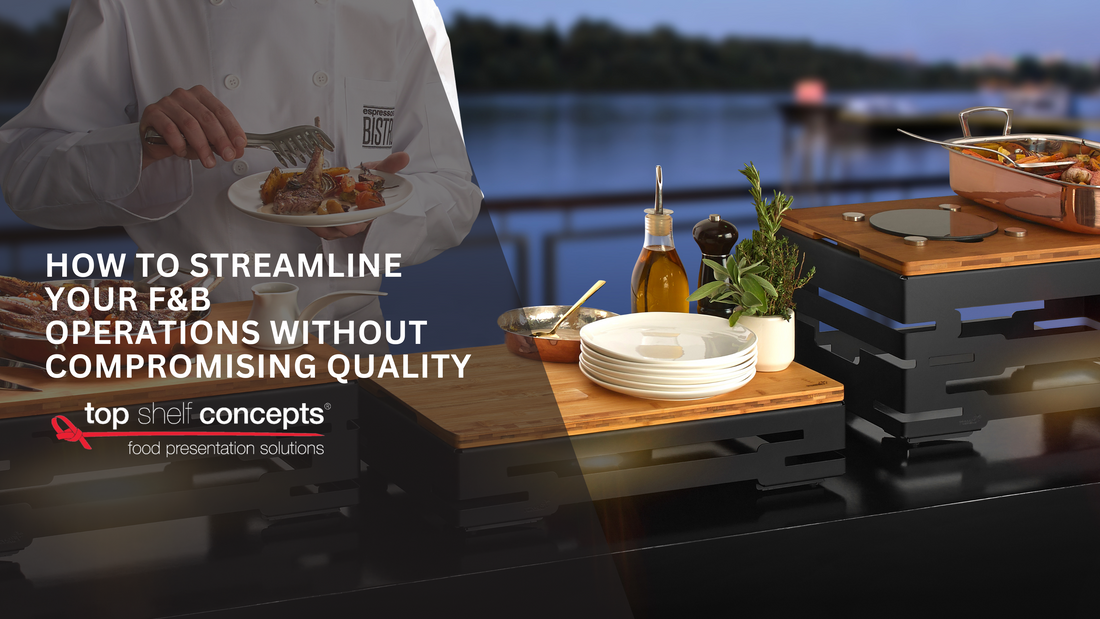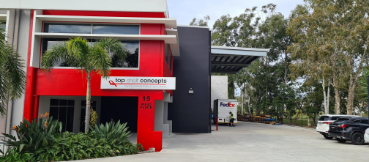A venue’s food & beverage (F&B) department is not just a source of revenue—it’s a core part of the guest experience. Whether you run a hotel, restaurant, or event venue, ensuring efficient operations without sacrificing food quality is a balancing act many struggle with.
However, with the right strategies, it's possible to increase productivity, reduce waste, and boost profitability—all while maintaining the exceptional standards your guests expect.
The Process of Streamlining
Streamlining isn’t about rushing through tasks—it’s about working smarter at every stage of your F&B operation. To truly improve efficiency without compromising quality, you need to understand how your current systems function, identify where inefficiencies lie, and implement targeted solutions.

1. Start with Process Mapping
Before making any changes, you need a clear picture of how things currently work. Start by mapping out your F&B service workflows—from procurement and food prep to service and clean-up. Where do delays happen? Where is communication breaking down?
This visual overview allows you to:
- Identify bottlenecks
- Reduce redundant tasks
- Spot opportunities for automation or delegation
Once mapped, involve key team members in evaluating pain points and suggesting improvements. Those on the ground often have the most practical solutions.
2. Invest in Smart Inventory Management
Nothing disrupts F&B service like running out of key ingredients—or discovering food wastage due to spoilage. Streamlining inventory is critical for cost control and service consistency.
Modern inventory management software can:
- Track stock levels in real time
- Forecast purchasing needs based on past trends
- Alert you when items are nearing expiry
- Minimise over-ordering and reduce storage space
Even if you’re managing a smaller venue, using digital spreadsheets or mobile inventory apps can significantly improve stock oversight and reduce costly errors.
3. Train Staff for Multi-Functionality

Cross-training your F&B staff helps maintain high service standards, especially during peak periods or staff shortages. A team member who can confidently switch from barista to server, or from food runner to host, becomes an asset to operational flow.
Benefits of cross-training include:
- Greater shift flexibility
- Faster response times during rush hours
- Improved team morale through skill development
Incorporating easy-to-set-up equipment can further support this flexibility—especially solutions that require no special training and can be set up quickly by just one person. These tools not only save time but also empower any staff member to step in and keep service running smoothly.
4. Standardise Recipes and Portion Sizes

Consistency is the hallmark of quality in any F&B operation. Guests expect the same dish to taste and look the same each time they order it.
By standardising your recipes:
- Prep becomes faster and more accurate
- Ingredient costs are easier to control
- Staff training is simplified
- Guest expectations are consistently met
Likewise, use tools like portion scoops, ladles, or canape dishes to control portion sizes—this helps maintain presentation, avoid over-serving, and reduce food waste.
5. Use the Right Tools and Equipment

Outdated or ill-suited kitchen equipment can slow down production and increase energy consumption. Audit your kitchen regularly to ensure your tools and appliances are supporting—not hindering—efficiency.
Consider:
- Multi-functional appliances that save space and time
- Induction heaters for faster, safer, and more precise cooking
- Ergonomic setups to reduce movement and fatigue
- Presentation tools like tiered trays or risers to reduce last-minute styling efforts
In front-of-house, solutions like mobile service trolleys or modular buffet systems can speed up service while still impressing guests.
6. Keep Quality Front and Centre
Above all, never lose sight of quality. Streamlining is meant to make operations easier and more efficient—but not at the cost of compromising the guest experience. In the hospitality industry, guests may not always see the behind-the-scenes changes, but they’ll immediately notice if something feels rushed, impersonal, or poorly executed.
It’s easy to fall into the trap of trimming costs or cutting steps to save time, but shortcuts that sacrifice flavour, presentation, or service standards will do more harm than good in the long run. Quality is what builds trust, encourages repeat business, and earns positive reviews.
As you streamline, build every decision around one guiding question: Will this improve the guest experience? If the answer is no—or if the improvement isn’t obvious to the guest—rethink or refine the approach.
Final Thoughts
Streamlining your F&B operations isn’t about cutting corners—it’s about smart, sustainable improvements that align with your brand’s commitment to excellence. With careful planning, training, and the right tools, you can deliver high-quality food and service while boosting efficiency and profitability.
In the end, the most successful hospitality venues are those that find harmony between operational speed and unforgettable guest moments. Your guests won’t see the streamlined systems behind the scenes—but they will taste the difference.












